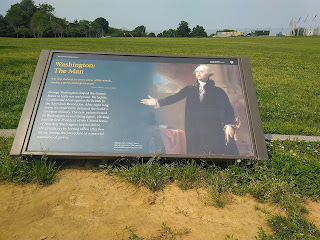Archive
- December 2009
- January 2010
- February 2010
- March 2010
- April 2010
- May 2010
- June 2010
- July 2010
- August 2010
- September 2010
- October 2010
- November 2010
- December 2010
- January 2011
- February 2011
- March 2011
- April 2011
- May 2011
- June 2011
- July 2011
- August 2011
- September 2011
- October 2011
- November 2011
- December 2011
- January 2012
- March 2012
- April 2012
- May 2012
- June 2012
- July 2012
- August 2012
- September 2012
- October 2012
- December 2012
- February 2013
- April 2018
- May 2018
- June 2018
- July 2018
- August 2018
- October 2018
- November 2018
- December 2018
- January 2019
- February 2019
- March 2019
- April 2019
- June 2019
- August 2019
- October 2019
- November 2019
- December 2019
- May 2020
- August 2020
- September 2020
- October 2020
- November 2020
- December 2020
- January 2021
- February 2021
- March 2021
- April 2021
- May 2021
- June 2021
- August 2021
- October 2021
- November 2021
- March 2022
- April 2022
- May 2022
- June 2022
- August 2022
- September 2022
- October 2022
- January 2023
- February 2023
- March 2023
- April 2023
- July 2023
- August 2023
- September 2023
- October 2023
- November 2023
- December 2023
- February 2024
- March 2024
- April 2024
- May 2024
- June 2024
- July 2024
- August 2024
- September 2024
- October 2024
- November 2024
- December 2024
- May 2025
Teach Carl travels to Washington D.C. (National Mall and National Zoo)
On our second full day in Washington D.C., we drove to the National Zoo, paid $25 for parking, and took the Metro to Union Station. Then we took the Circulator around the National Mall to see all the monuments and memorials.
It was a very long escalator ride to catch the Metro.
Washington Monument (closed)
View from the Jefferson Memorial.
Inside the Jefferson Memorial.
World War II Memorial - Atlantic
View across to the World War II Memorial - Pacific
View as passing by the United States Capitol building.
Pandas at the National Zoo.
After we saw the National Mall, we went back to the National Zoo to see the Pandas and other animals, as well as see a show about dinosaurs. Then we drove back to the bed and breakfast.
A couple nice days this week.
There were a couple of days this week when it wasn't raining and I wasn't working that we got out and enjoyed the day.
One of those days we went down to the river.
DJ makes new friends every time she goes out.
This is not chocolate. There was a planter nearby that she kept trying to play in.
One of the times none of us were watching, she ran for the planter, not to play, but to eat.
Our zoo has on loan a Giant Panda. There are less than 2,000 in the whole world due to a history of man first hunting them and later clearing forest to make room for cities or more farm land. About 250 pandas live in zoos. They are mostly in the high mountains of central China. We thought this might be something special to see.
Panda's are meat eaters but do not hunt, so they mostly eat bamboo. The Giant Panda eats about 30kg of bamboo every day. There are over 200 kinds of bamboo but they only like about 20 of those. They also eat small animals like birds and mice. In the zoos, they also eat some fruit and special cookies.
Panda's live alone. The females are old enough to have babies at around 6 years old and can only get pregnant once a year. The males fight for the right to be the females mate and after they are forced to leave.
They give birth five months later and the babies are no bigger than an adult human hand. They will nurse from their mother for about eight months and after one year they are as big as a small 10 to 12 year old human child.
Panda's will only raise one cub at a time, so if they have more than one, they have to choose which will live and which will die. The cub is full grown after two years and the mother will make it leave. Pand's live about 20 years in the wild and 30 in zoos.
There are two kinds of panda, the Giant and the Qingling. The Qingling has a smaller head but larger molars. Unlike the familiar black and white for the Giant Panda, the Qingling is dark and light brown in color. There is another animal that lives in the same area as both kinds of panda that is called the Red Panda. The Red Panda is not a panda, but instead is related to the raccoon or skunk, and is much smaller than the panda.
Panda's are the only bears that do not hibernate during winter. They are usually very mild tempered but will fight to protect their young or if they are provoked. An adult panda standing on its back feet can stand about five feet tall and weigh around 160kg.
Dj was so tired after viewing the panda that she had to stop and take a nap sitting on a bench and leaning against her mother. She slept and snored for about an hour.
DJ's newest stuffed toy.












































